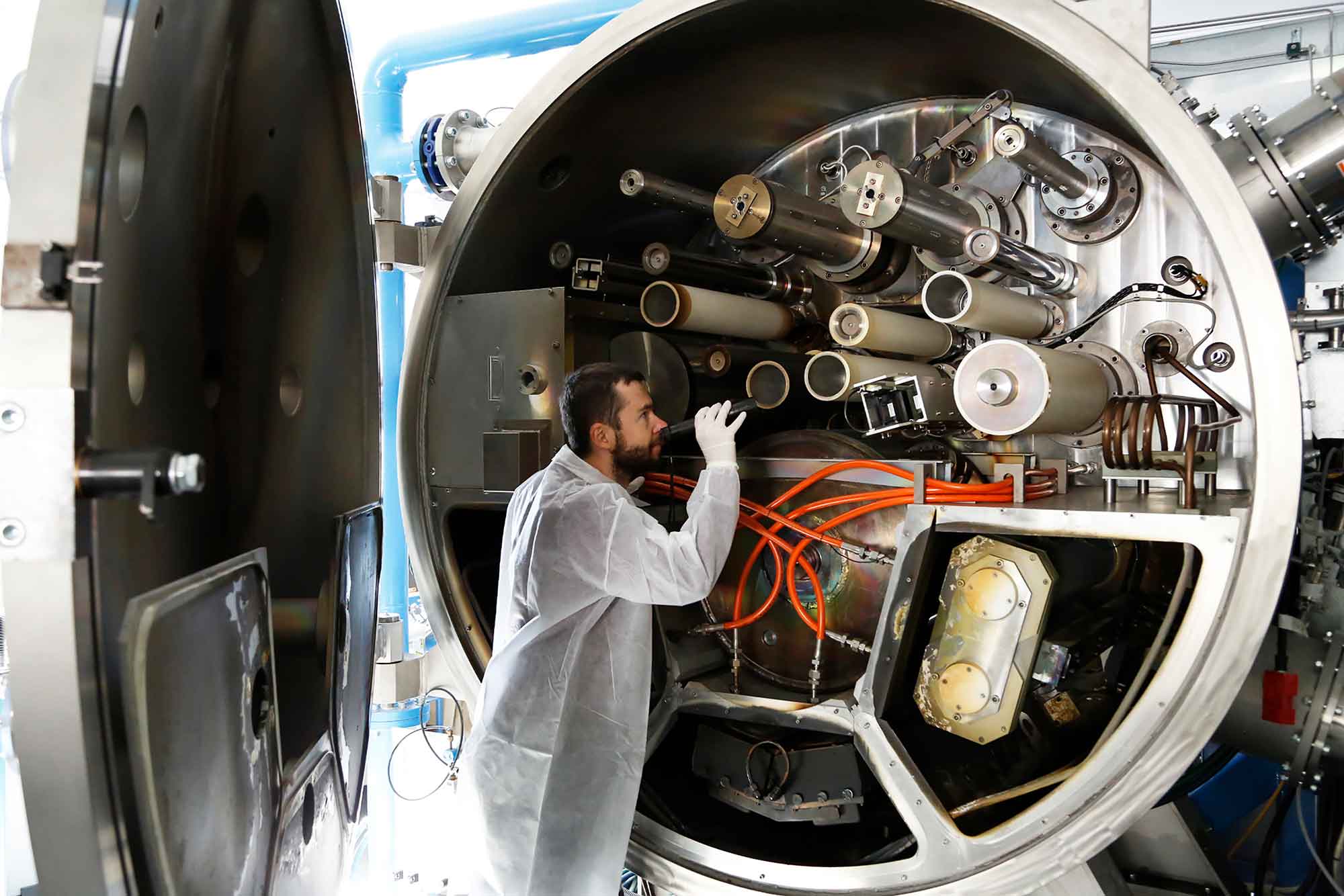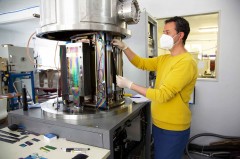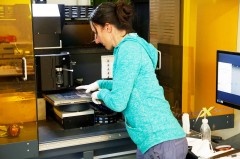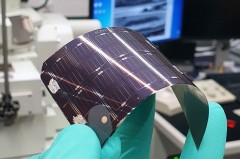As well as silicon technology, CIGS thin-film solar cell technology1 has also emerged as an innovative manufacturing method for the PV market in recent years. CIGS PV modules can be produced at low cost using the roll-to-roll technique and are lightweight and highly bendable. The technology is opening up many potential new uses for photovoltaics, e.g. in the automotive industry, aerospace and building integration. The Austrian company Sunplugged – Solare Energiesysteme plays a pioneering role in the production of flexible CIGS PV modules. It has developed the innovative SunP CIGS process as well as the Monoscribe interconnection concept, which is suited to industrial application. Flexible PV modules are custom-made in a “post-monolithic” interconnection process with the help of laser structuring and inkjet printing. Sunplugged has achieved a degree of maturity in its technology that allows fully functional PV modules to be produced. Peak efficiency is currently 14% at cell level and 8% at module level.
R&D to improve efficiency
As part of the NoFRONTIERS project, the company is collaborating with Austrian and international research institutions2 to develop the technology further and increase efficiencies to a level that makes it economically viable. This is achieved with a peak efficiency of 17% at cell level and an average efficiency of 12% at module level.
The complexity and variety of the technologies that can be used (coating methods, laser equipment, printing techniques, etc.) call for a systematic, scientific evaluation. The comprehensive analysis of the process is intended to form the basis for selecting the right technology so that future-oriented investments can be made in industrial production.
Researching the entire process chain
In the course of the project, all production steps (absorber layer, front layers and interconnection) are being optimised and coordinated based on the very latest research findings. These include:
> Optimising the process for making the absorber layer: initial results show that the new techniques are suitable, particularly in terms of the homogeneity and production costs of the absorber layer
> Using femtosecond and picosecond lasers for individual “post-monolithic” interconnection
> All-in-one sputtered top layers
> Ultra-gentle preparation of polished cross-sections of thin films on flexible, bendable substrates
> Straightforward, stable diagnostics for process monitoring
The findings from the project will help to optimise the SunP CIGS process so that Sunplugged can play a pioneering role on the world stage in the production of customisable PV modules. The research partners are benefitting from the international exchange of knowledge and have the chance to hone their expertise in PV technology (specifically in CIGS PV), thin-film and coating technology and material analysis.
energieforschung.at/projekt/novel-flexible-r2r-produced-non-toxic-individualizable-high-effficent-and-robust-solar-modules/
1 CIGS refers to the combination of several materials – copper, indium, gallium and selenium – in thin-film solar modules
2 Project partners: University of Innsbruck (consortium leader), PhysTech Coating Technology GmbH, Sunplugged – Solare Energiesysteme GmbH, JOANNEUM RESEARCH Forschungsgesellschaft mbH, Helmholtz-Zentrum Berlin (HZB)




